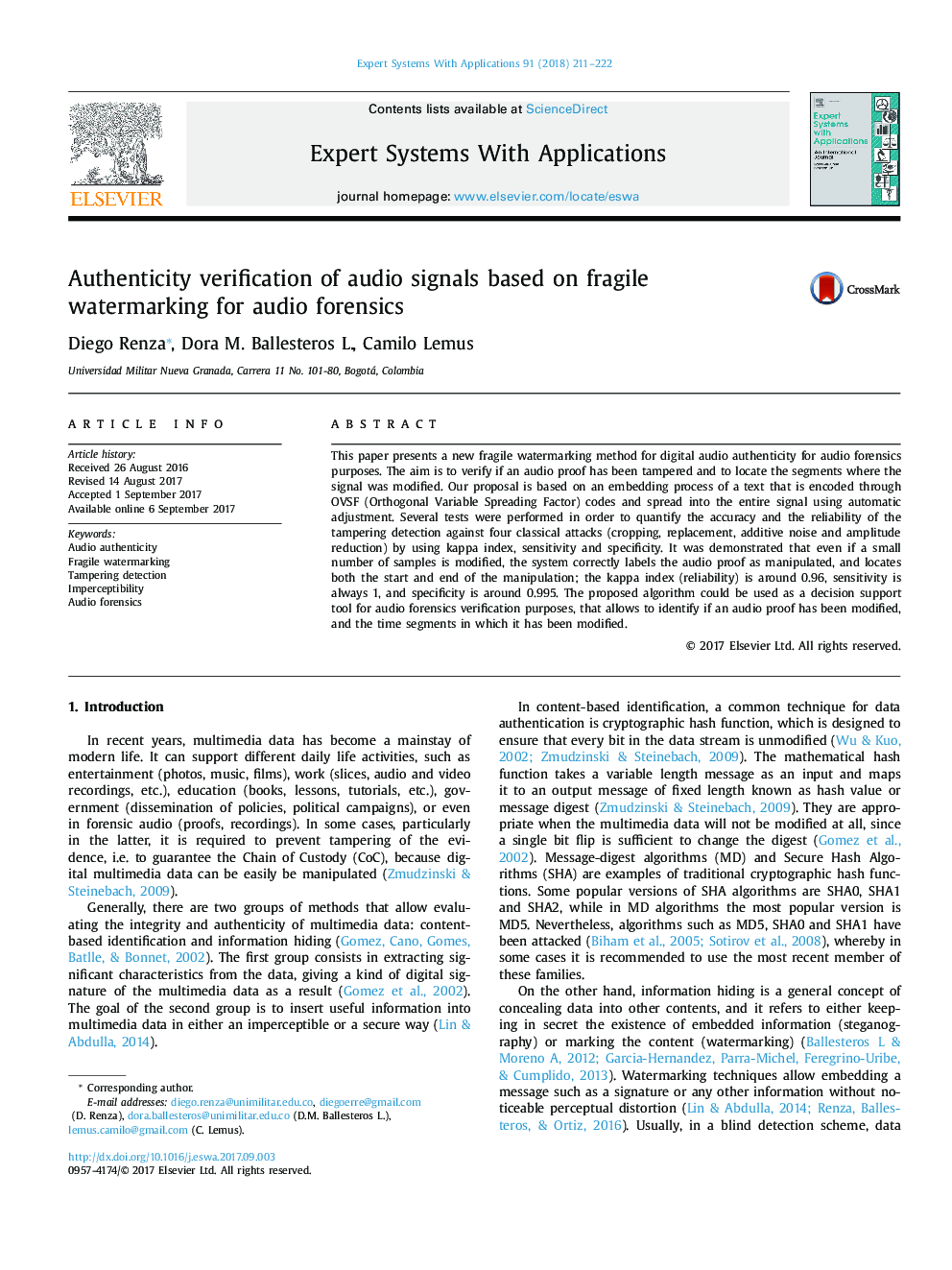| کد مقاله | کد نشریه | سال انتشار | مقاله انگلیسی | نسخه تمام متن |
|---|---|---|---|---|
| 4942928 | 1437615 | 2018 | 12 صفحه PDF | دانلود رایگان |
- A model for digital audio authenticity by means of fragile watermarking.
- Authenticity for audio forensics purposes.
- The mark is expanded through Orthogonal Variable Spreading Factor codes.
- The system can detect: cropping, replacement, additive noise and amplitude reduction.
- In tampering detection, Kappa index is around 0.95, specificity and sensitivity are close to 1.
This paper presents a new fragile watermarking method for digital audio authenticity for audio forensics purposes. The aim is to verify if an audio proof has been tampered and to locate the segments where the signal was modified. Our proposal is based on an embedding process of a text that is encoded through OVSF (Orthogonal Variable Spreading Factor) codes and spread into the entire signal using automatic adjustment. Several tests were performed in order to quantify the accuracy and the reliability of the tampering detection against four classical attacks (cropping, replacement, additive noise and amplitude reduction) by using kappa index, sensitivity and specificity. It was demonstrated that even if a small number of samples is modified, the system correctly labels the audio proof as manipulated, and locates both the start and end of the manipulation; the kappa index (reliability) is around 0.96, sensitivity is always 1, and specificity is around 0.995. The proposed algorithm could be used as a decision support tool for audio forensics verification purposes, that allows to identify if an audio proof has been modified, and the time segments in which it has been modified.
Journal: Expert Systems with Applications - Volume 91, January 2018, Pages 211-222
